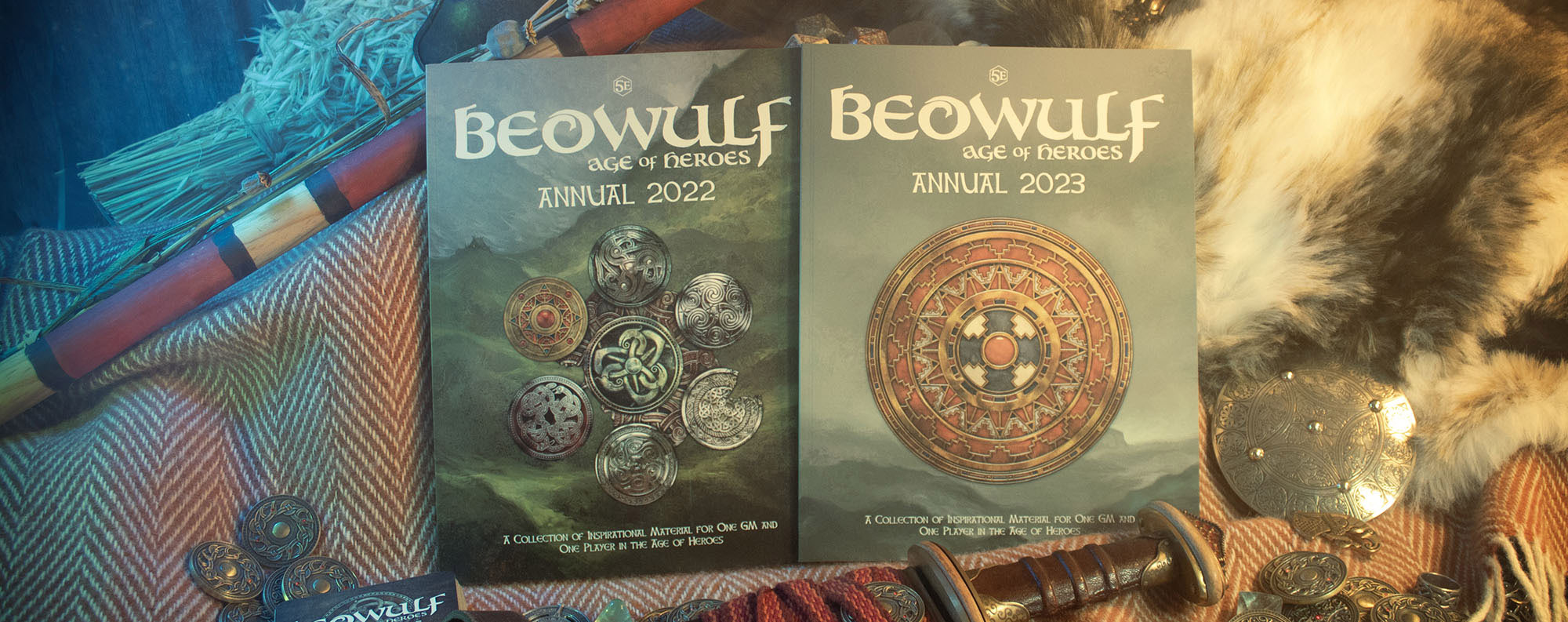This deck of 44 cards is intended to help create stories, back stories and additional threads to be woven through your BEOWULF scenarios. It is filled with BEOWULF-appropriate story fragments, people, places and things.
To use the deck, print the appropriate sheets, cut the individual cards out, fold and paste them to make a deck. Permission is given to print these for personal use.
The Cards

Each card has four story elements on the front, numbered 1 to 4.
1: Story
2: People
3: Places
4: Things
The backs of the cards show a sequence of numbers, of various lengths.
Using the story cards
Give the deck a good shuffle.
With the cards face down, cut the deck, and take the uppermost card from the cut.
Put this card face down in front of you. This is the Story Card and determines the sequence of elements used to make your story.
Now, for each number shown on the back of the Story Card, turn over a card from the deck, and read the numbered entry indicated. You may wish to write it down, or mark which entry was picked on each card with a token. Or, if you keep the drawn cards in order, you can use the Story Card as a reference to re-read the elements at any time.
Numbers preceded by a •
Where a number on the Story Card shows a • next to its number don’t draw a new card. Refer to the entry on the one you just drew. This enables elements from the same card to appear in your stories.
An Example
We cut the deck, and the back of the Story Card shows: 1 2 3 3 4

We turn over a first card and read entry 1

That gives us: “A lost treasure”
We turn over a second card and read entry 2:

“A youth”
We turn over a third card and read entry 3:

“The sea”
We turn over a fourth card and read entry 3

“A hearth”
We turn over a fifth card and read entry 4

“A helmet”
So we have:
A lost treasure, a youth, the sea, a hearth, a helmet
With these cues, we can create a story. The lost treasure could actually be the youth, lost at sea. A helmet is used in the Beowulf poem to refer to a king or leader. Perhaps it was a king’s son, lost at sea, and the king now sits by their cold hearth.
We could read the same cards a different way – a wayward youth has taken a helmet of great worth and made their hearth by the sea, living as an outlaw. What was this helmet, and why is it precious? Why is the youth hiding? Were they a child of a noble house? Or an outsider? Perhaps they found the helmet after a battle, and have hidden it away in their parent’s house down by the sea, where they eke out a living as beach combers? Or perhaps the helmet washed up there? Is the helmet a clue to a mystery?
However we interpret the elements, we have a little story, full of Beowulf-appropriate elements to worth with.

Hints and Tips
As you create each element of the story, remember that you can think laterally. Each part doesn’t have to link directly or literally to the next. Each prompt can be taken poetically or symbolically as well as more literally. For example, “a warrior” might be a literal mail-clad spear carrier. Or it might be someone fighting a battle of a different kind.
You’re also free to jump about in the order if inspiration strikes. And you can redraw a card if you’d like to – while the cards can be useful in pushing you outside of your writing comfort zone, there’s no need to get stuck with a card that doesn’t fit.
You can also use the cards to answer questions. If we wanted to know more about the youth from the example we could draw further cards to define them in more detail or inspire their backstory.
You can also use the cards in an entirely freeform way, ignoring the sequence generator and simply dealing them out one after another and seeing what occurs.

